Footage and satellite imagery from the past several months highlight demolitions of ethnic-Armenian churches, homes, residential buildings and even a village in Nagorno Karabakh. The demolitions were carried out by Azerbaijan’s government, now fully in control of the territory. The entire Armenian population of 120,000 fled to Armenia proper amid the full-scale military offensive in September 2023 with no indications or possibilities of returning. The incidents highlighted in this article took place between October 2023 and April 2024, after the complete fall of Nagorno Karabakh.
Among the demolitions that took place was that of an entire neighbourhood in the territory’s capital, Stepanakert (now renamed Khankendi by Azeri officials). A series of residential buildings, stores and the city’s bus station were demolished between October 2023 and April 2024. The area in question, 1.7 hectares, housed over 1000 residents, was previously targeted by Azerbaijan during the 2023 offensive with artillery, seriously damaging some buildings.
A geolocation of the footage shows the demolished neighbourhood adjacent to Nagorno Karabakh’s Artsakh State University, whose name has now been modified by authorities in Baku to Karabakh University, although there is no indication it is operating.

Footage from Nagorno Karabakh Observer’s archives showed that several of the demolished residential buildings were shelled by Azeri forces during the 2023 offensive. The area was eventually abandoned following the exodus of the territory’s entire civilian population.
Footage from official Azeri sources from 5 July 2024 show at least nine residential buildings and Stepanakert’s bus station had been completely demolished. The area in question, three hectares in total, is located in front of the Nagorno Karabakh’s Artsakh State University, now renamed Karabakh University by authorities in Baku.
A few days prior to the above-mentioned, footage of ethnic-Armenian homes being demolished in the town of Shushi was found on numerous social media channels. Nagorno Karabakh Observer experts geolocated the footage, adjacent to the town’s cathedral (also visible in the footage with its cross removed from the dome.)
In March 2024, footage appeared on social media showing Nagorno Karabakh’s Parliament building being demolished. In one instance, demolition work was filmed from a passing vehicle, while in another an official Azeri media outlet provided close-up scenes of the demolition being carried out. The information was later verified by Nagorno Karabakh Observer experts and further confirmed through available satellite imagery.

Churches also being targeted
Aerial images of Shushi indicate numerous individual homes and multi-story residential buildings demolished near the Armenian Holy Saviour Cathedral, whose territory has also been partially destroyed.
A study from May 2022 suggests extensive work is being carried out on the main Armenian cathedral in Shushi by the authorities in Baku, showing the crosses on the domes removed and work being carried out on the walls. The cathedral remained standing and in good condition after the 2020 war, thus scaffolding suggests work is being carried out to erase Armenian scripts and carvings on the walls according to experts.
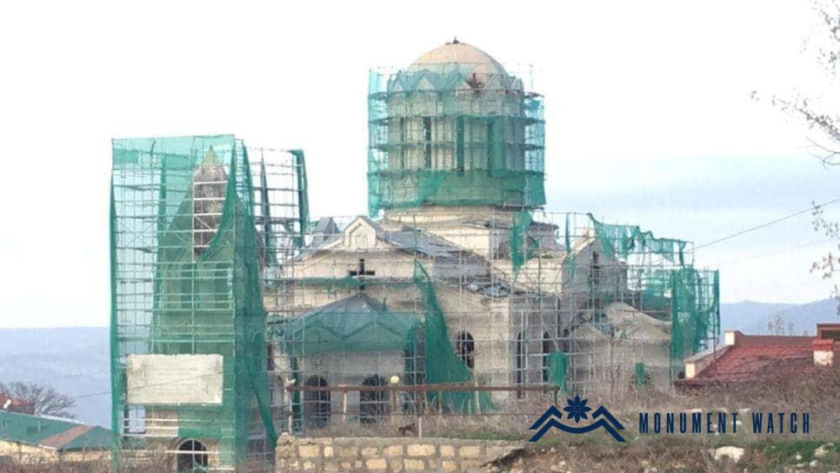
Another Armenian church in the Lachin area (known as Berdzor to local Armenians), the Saint Resurrection Church, was completely demolished according to satellite imagery from April 2024. The area was ceded to Azerbaijan by Armenia’s government overriding the decisions of local Karabakhi authorities in late August 2023. The move seal off the territory, closing the only land corridor the non-recognised territory had with Armenia, in addition to the abandonment of several villages in the area.
At about the same time as the above demolition, another Armenian church, the Kanach Zham (Arm. Green Chapel) was demolished in Shushi, along with numerous homes in the vicinity. The town came under Azeri military control during the last days of the 2020 war and remains under their control.
Villages demolished: the cases of Karin Tak, Mokhrenes, Khtsaberd and Tagavard
Besides buildings, at least two villages have been completely demolished, with the possibility that others have also been as satellite imagery is updated. The entire ethnic-Armenian village of Karin Tak, adjacent to Shushi, was demolished between October 2023 and April 2024. The village had around 600 residents prior to the 2023 Azeri offensive.
Previous cases of ethnic Armenian homes being demolished occurred immediately after the November 2020 Trilateral ceasefire agreement in areas that had come under Azerbaijan’s military control. The village of Tagavard became divided due to an unsuccessful Azeri advance at the time of the ceasefire, with Azeri troops occupying postions on one side, and Karabakhis on another. Satellite images from August 2021 show at least 38 ethnic Armenian homes had been demolished for the purpose of building a road through the area by the Azeri side.
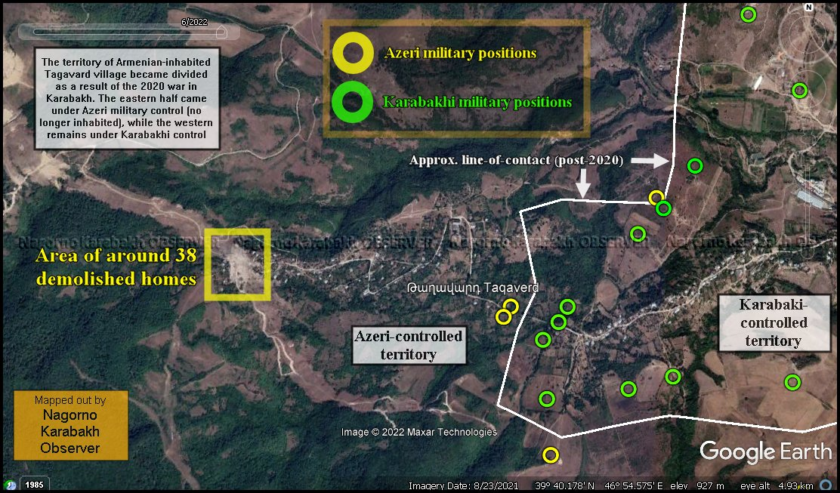
Another village in Hadrut region, Mokhrenes, which fell under Azeri control in October 2020 has been demolished. Over 40 structures in the ethnic-Armenian village of about 200 inhabitants were seen lying in ruins according to satellite imagery from 2023.
Another ethnic-Armenian village, Khtsaberd, abandonded in 2020 as locals fled amid the Azerbaijan’s military campaign, has also been destroyed. Satellite imagery shows the majority of buildings, homes and stables for livestock, destroyed. As in other areas of Nagorno Karabakh where ethnic Armenians fled, there are indications of large-scale sacking of homes in Khtsaberd as well.
The demolition of at least one ethnic-Armenian cemetery in the village of Mets Taglar was documented through satellite imagery. The destruction of gravestones and nearby homes took place following the 2020 Ceasefire, around spring 2021. A new road was build by Azerbaijan through the village, and while that explains the reason for demolishing some homes, the cemetery was located 30 metres from where the new road was built, not necessarily hindering its construction.
The documented cases of homes, religious sites and at least two villages being demolished suggests that authorities in Baku are no longer favouring the return of ethnic Armenians to the territory. This comes despite numerous official statements by officials in Baku urging local Armenians to accept Azeri citizenship and renounce self-determination in the days following the 2023 offensive.
Of the 160,000 Armenians that lived in the enclave prior to the 2020 war, approximately 120,000 remained afterwards to eventually flee amid Baku’s full-scale military offensive (officially called an anti-terror operation by authorities in Baku) in September 2023.
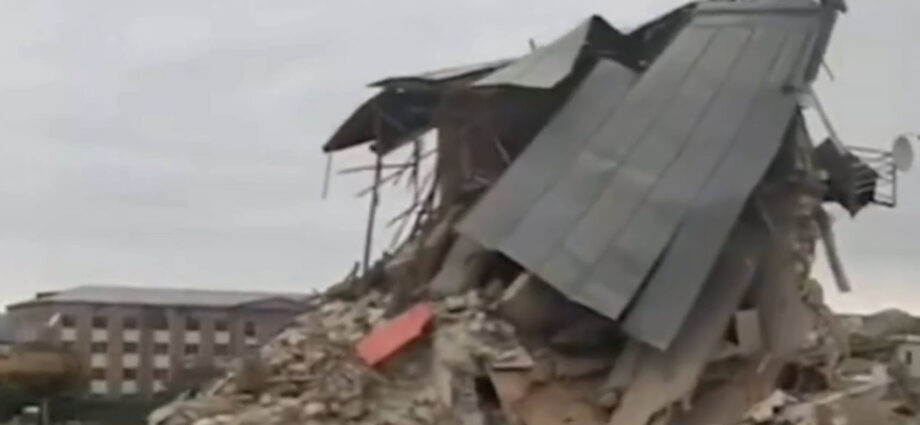
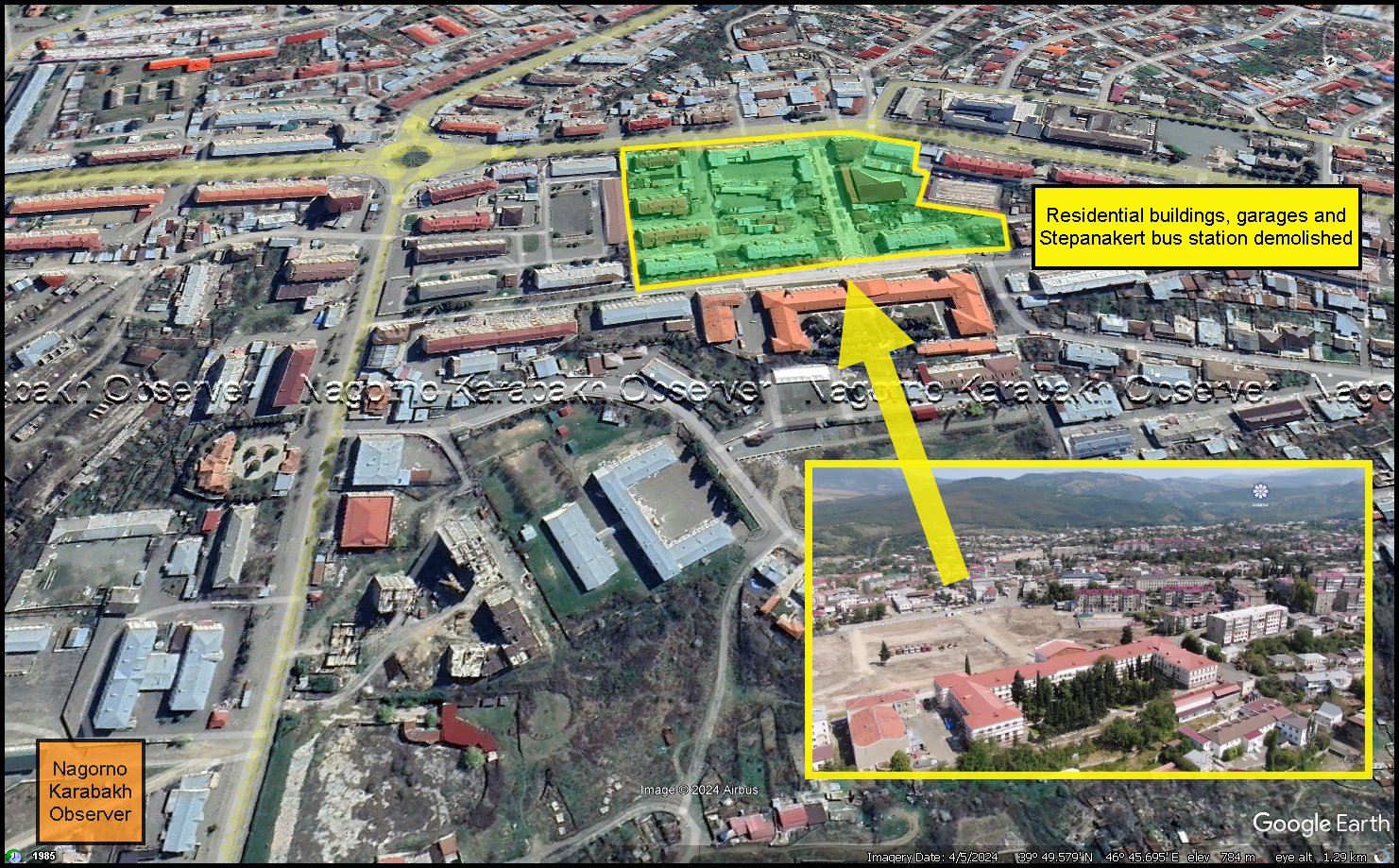




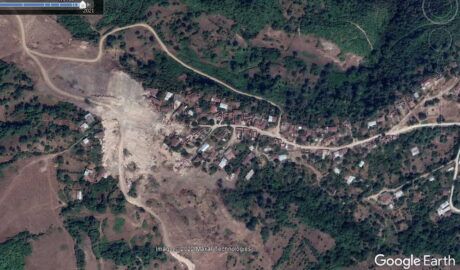
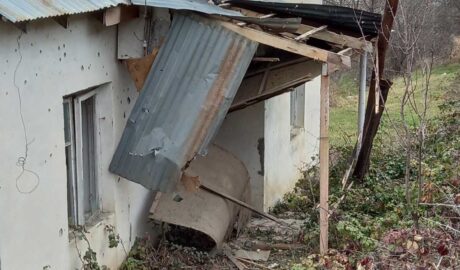


Comments are closed, but trackbacks and pingbacks are open.